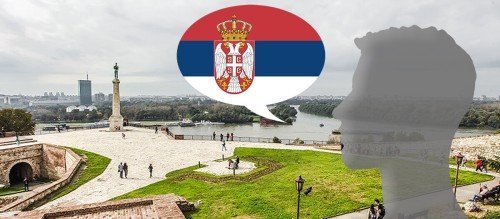
Serbian is a Slavic language spoken by approximately 9.5 million people, primarily in Serbia, but also in Bosnia and Herzegovina, Montenegro, Croatia, and other countries around the world. It is written using the Cyrillic script, but Latin script is also used. Serbian is a complex language with a rich history and culture, and in this blog post, we will explore some of its unique characteristics.
One of the most striking features of the Serbian language is its use of cases. Serbian has seven cases, which are used to indicate the grammatical role of nouns, pronouns, and adjectives in a sentence. These cases include nominative, genitive, dative, accusative, vocative, instrumental, and locative. Each case has a specific function and is used to convey important information about the sentence structure and meaning.
Another interesting aspect of the Serbian language is its extensive vocabulary. Serbian has borrowed words from various languages throughout history, including Turkish, Greek, Latin, and German. This has resulted in a rich and diverse vocabulary, which includes many unique and nuanced words and expressions that are not found in other languages.
The Serbian language has a rich and diverse vocabulary, thanks to its historical borrowing of words from other languages. Serbian has borrowed words from Turkish, Greek, Latin, German, Hungarian, and other languages. This has resulted in a unique and nuanced vocabulary, with words that are specific to Serbian and not found in other languages.
For example, the Serbian word "merak" is used to describe a feeling of pleasure and enjoyment derived from simple things in life, such as spending time with family and friends or enjoying a good meal. Another example is the word "slatko", which refers to a type of sweet preserve made from fruit and served with cheese or other savory foods.
Serbian also has many words that describe emotions and experiences that are difficult to express in other languages. For example, the word "razbibriga" describes a pleasant distraction or diversion from everyday concerns, while the word "osmišljavanje" refers to the process of giving meaning to something or finding a purpose in life.
Additionally, Serbian has many words that describe traditional Serbian culture, such as "kolo", which is a traditional Serbian folk dance, and "ćevapčići", which are small grilled sausages that are a popular Serbian dish.
In conclusion, the extensive vocabulary of the Serbian language is one of its unique features, reflecting the rich history and cultural influences that have shaped the language over time. Serbian words often convey specific nuances of meaning and emotions that are difficult to express in other languages, making Serbian a language of great depth and complexity.
Serbian also has a unique sound system, with many consonant clusters and vowel distinctions. For example, Serbian distinguishes between long and short vowels, which can change the meaning of a word. Additionally, Serbian has a distinct stress pattern, with stress placed on the first syllable of a word in most cases.
The cultural importance of the Serbian language cannot be overstated. Serbian literature and poetry have a long and rich tradition, dating back to the Middle Ages. Notable Serbian writers include Njegoš, Crnjanski, and Andrić, who have contributed significantly to Serbian literature and culture. The Serbian language is also an essential component of Serbian identity and national pride.
In conclusion, the Serbian language is a fascinating and complex language with a rich history and culture. Its unique features, such as its use of cases and extensive vocabulary, make it a language of great depth and nuance. Serbian literature and poetry are a testament to the cultural importance of the language and its role in Serbian identity. Learning Serbian can be a challenging but rewarding experience, opening up a new world of literature, culture, and communication.








